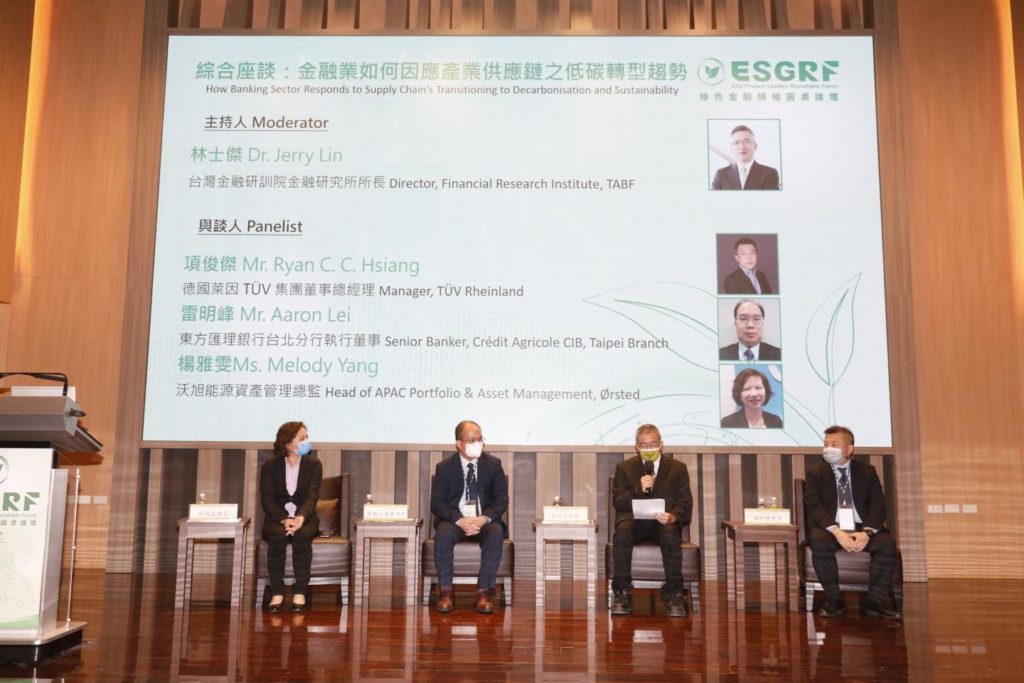[Event Report] 2022 ESG Finance Leaders Forum I 綠色金融領袖論壇
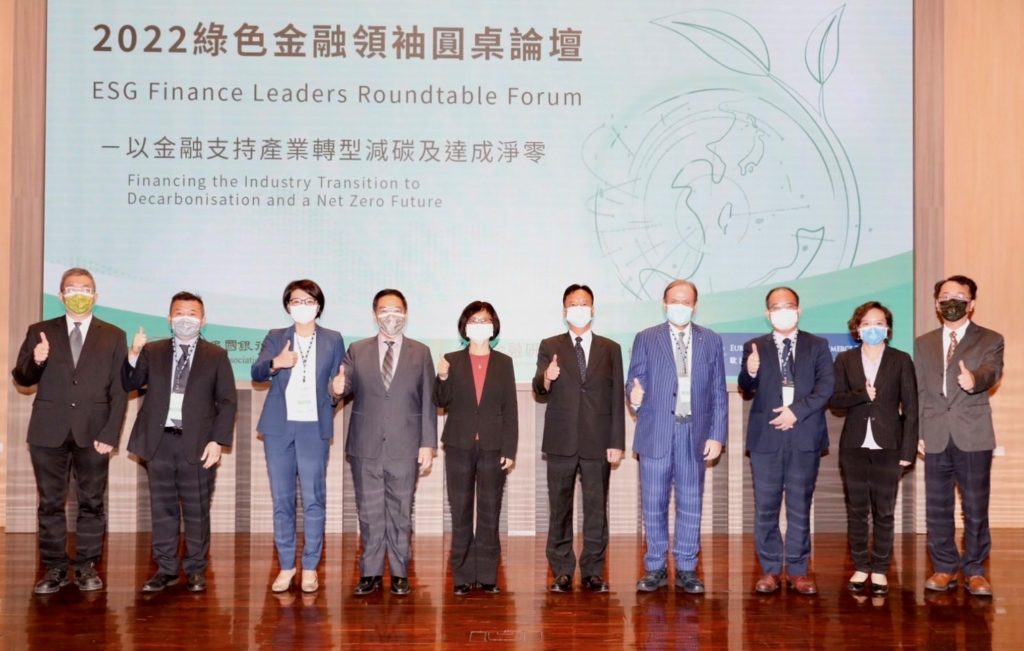
(L-R: Jerry Lin, Director of TABF; Ryan Hsiang, Manager of TÜV Rheinland; Jennifer Wang, MD of TÜV Rheinland; Dr. Hank C.C. Huang, President of TABF; Jean Chui (Shu-chen), Vice Chairperson of FSC; Wang Tsong-ming, Secretary General of BAROC; Giuseppe Izzo, Vice Chairman and LCI Chair of ECCT; Aaron Lei, Executive Director of CACIB; Melody Yang, Head of APAC Portfolio & Asset Management of Ørsted)
-
The ECCT's Low Carbon Initiative (LCI) was a co-organiser of the 2022 ESG Finance Leaders Forum (綠色金融領袖論壇: 以金融支持產業轉型減碳及達成淨零) organised by the Bankers Association of the Republic of China (BAROC) and the Taiwan Academy of Banking and Finance (TABF). The event began with opening remarks by Dr. Hank C.C. Huang, President of the Taiwan Academy of Banking and Finance (TABF, 台灣金融研訓院院長 黃崇哲), Jean Chui (Shu-chen), Vice Chairperson of the Financial Supervisory Commission (FSC, 金融監督管理委員會副主委 邱淑貞), Wang Tsong-ming, Secretary General of BAROC (中華民國銀行公會秘書長 王聰明) and ECCT Vice Chairman and LCI Chair Giuseppe Izzo (歐洲商會副理事長暨低碳倡議行動主席 尹容). This was followed by presentations by financial and industry experts about how finance can support industrial transformation, decarbonisation and help to reach the eventual goal of a net zero economy. The forum was concluded by a panel discussion featuring all of the speakers.
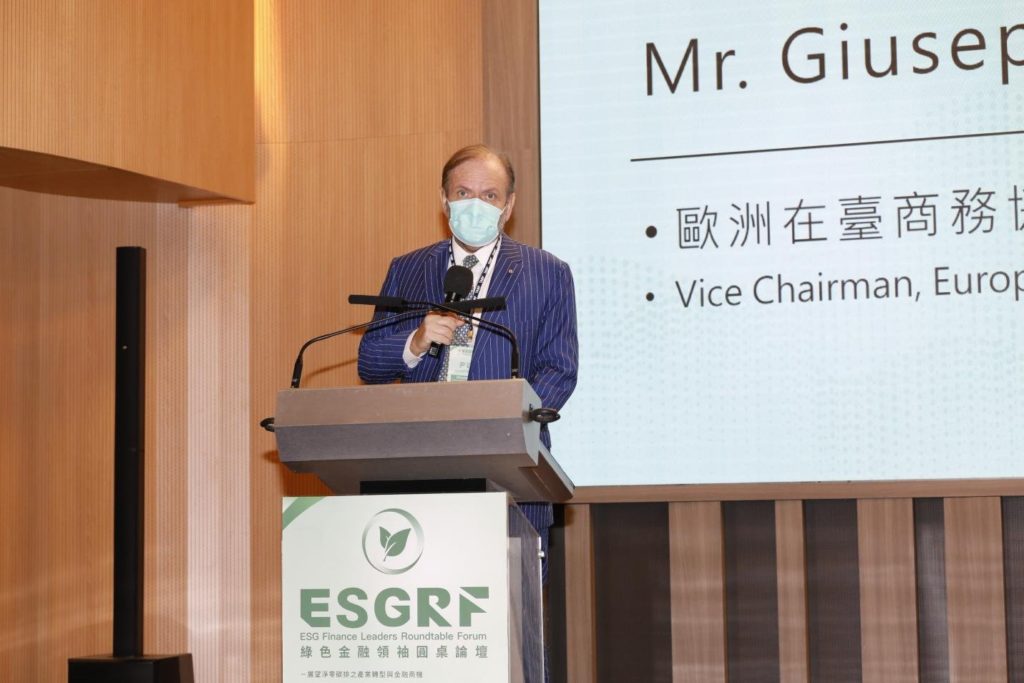
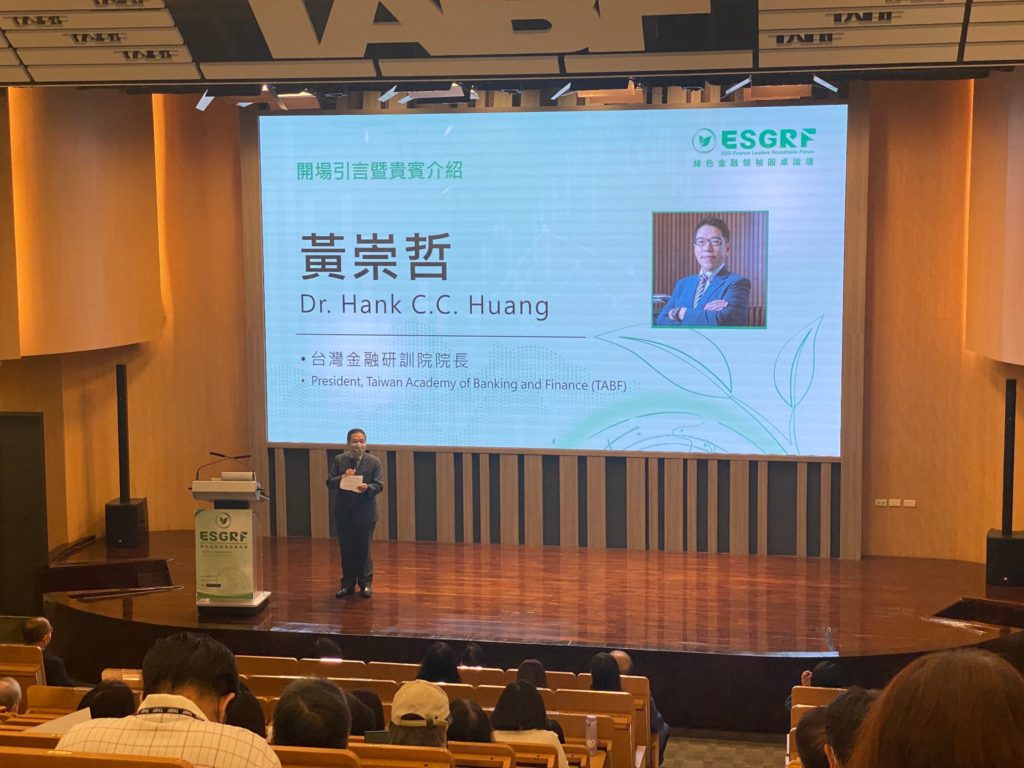
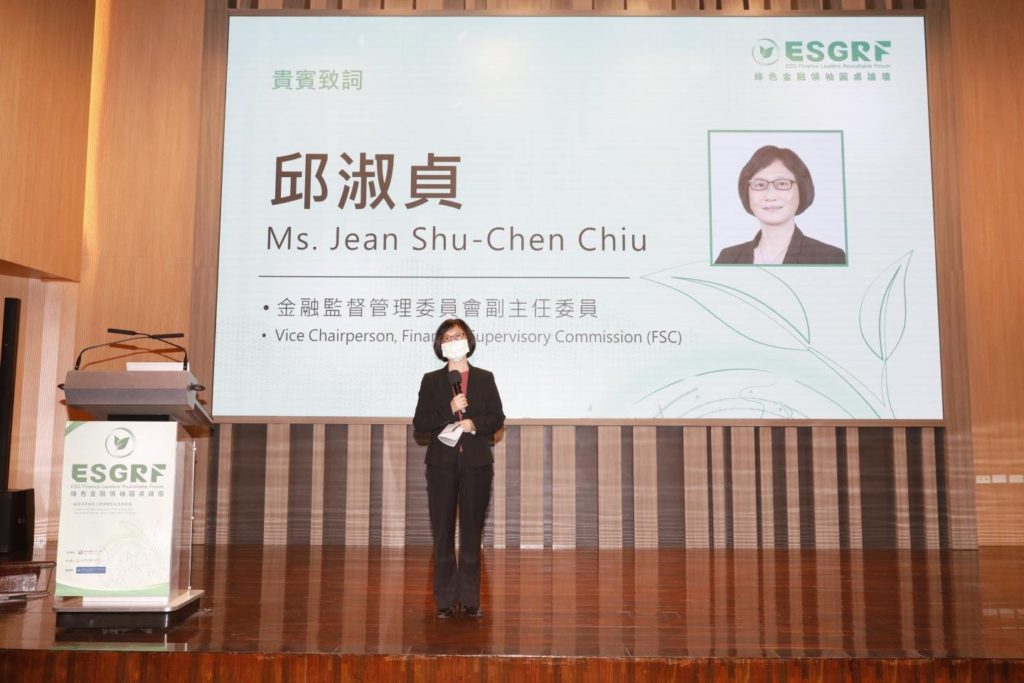
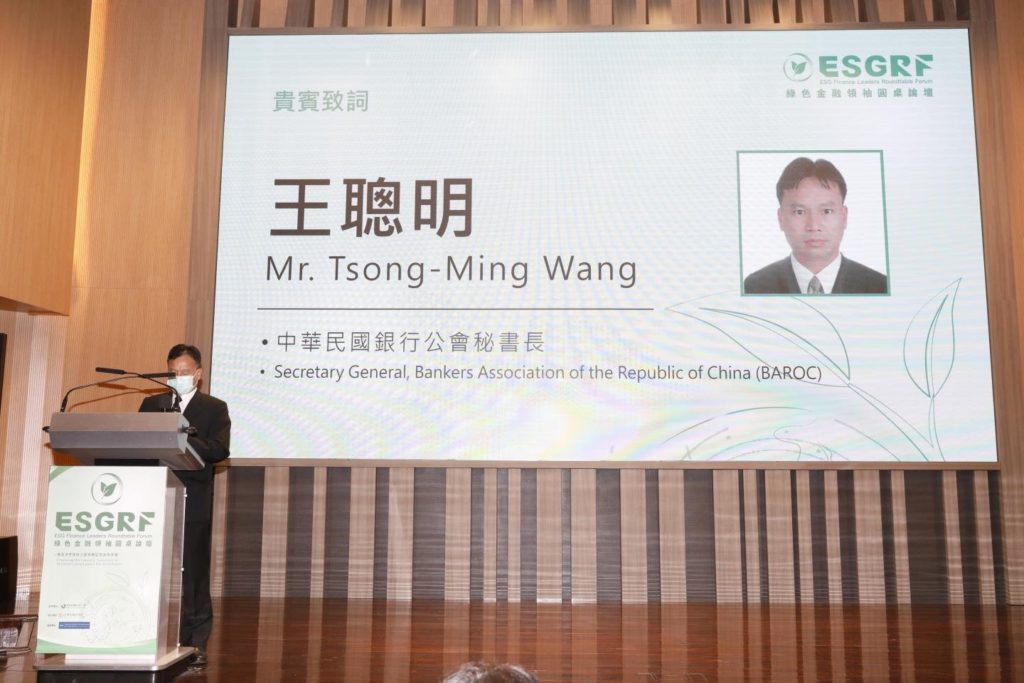
In his presentation, Dr Honda Chen, Head of the sustainable finance office at TABF (台灣金融研訓院永續金融召集人 陳鴻達) spoke about the role of the financial sector in supporting the net zero transition.
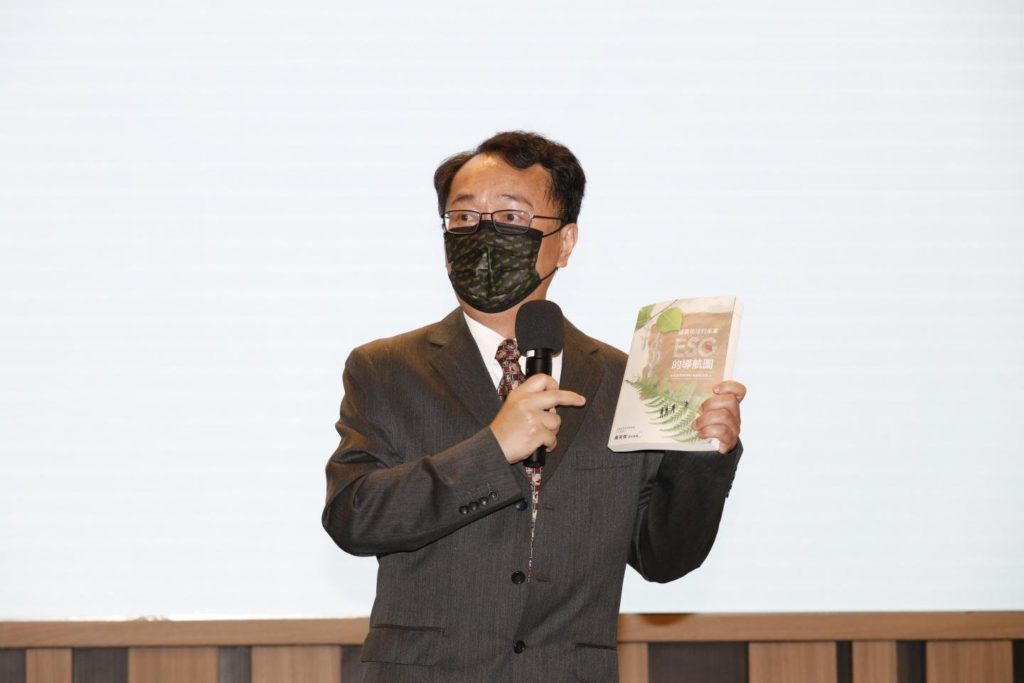
The pathways for climate risk to be transmitted to the financial sector are becoming clearer. Extreme climate events could cause production interruption losses, decrease revenues, reduced profits, increase default rates, increased leverage and debt for enterprises. For banks, it could result in an increase in loan defaults, a decrease in value of corporate bonds and reduced profits.
IFRS 9 requires that if “the credit risk has increased significantly, expected credit loss (ECL) must be adjusted. If there is an increased frequency and intensity of extreme climate events, there is an increased probability of defaults and expected losses. Meanwhile, IFRS 13 requires the fair valuation of assets. If high carbon-emitting machinery and equipment are used as collateral, carbon reduction policies will require a reduction in their value.
IFRS requires sustainability related financial information and climate related disclosures. Chronic physical risks include rising sea levels of rising temperatures. This could necessitate moving a company’s production or other facilities. Transition risks include policy, legal market, and reputation. For example, what happens if the sale of a company’s products or services are banned, such as if gas water heaters or diesel vehicles are banned?
The EU’s banking rules (the Capital Requirements Regulation and the Capital Requirements Directive) aim to ensure that EU banks become more resilient to potential future economic shocks, while contributing to Europe's recovery from the Covid-19 pandemic and the transition to climate neutrality. The proposal would require banks to systematically identify, disclose and manage ESG risks as part of their risk management. This includes regular climate stress testing by both supervisors and banks. Supervisors will need to assess ESG risks as part of regular supervisory reviews. All banks will also have to disclose the degree to which they are exposed to ESG risks. EU taxonomy provides for six environmental objectives: climate change mitigation, climate change adaptation, sustainable and protection of water and marine resources, transition to a circular economy, pollution prevention and control and protection and restoration of biodiversity and eco-systems. Corporations are required to report on how their economic activities align with these objectives while credit institutions report the proportion of exposures related to these activities.
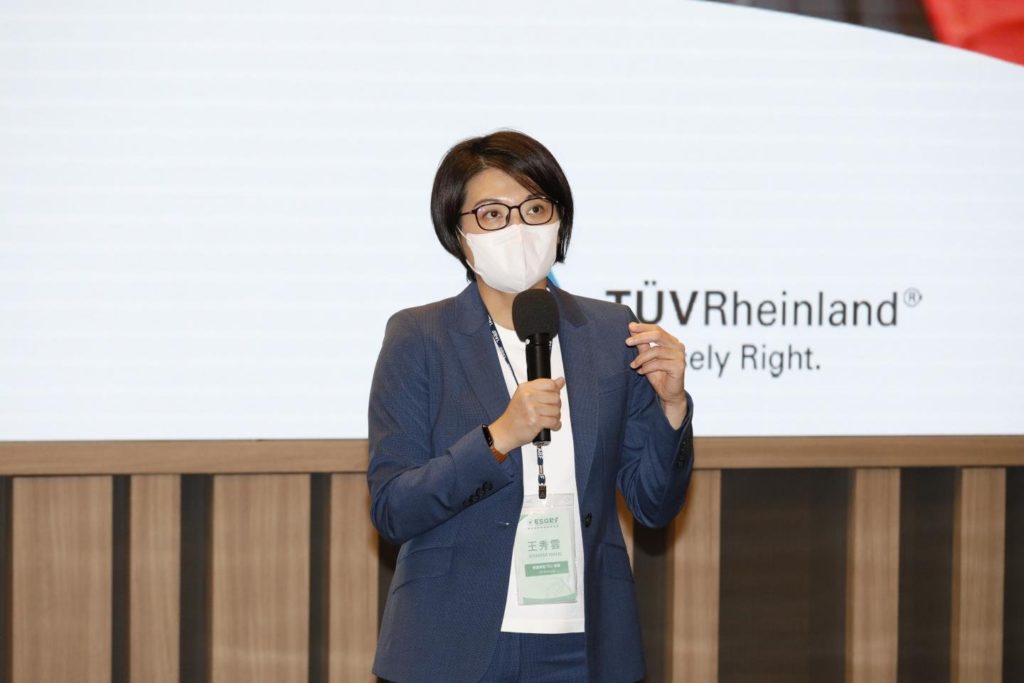
In their presentations, Jennifer Wang, Managing Director of TÜV Rheinland (德國萊因TÜV集團董事總經理 王秀雲) and Ryan Hsiang, Manager of TÜV Rheinland (德國萊因TÜV集團經理 項俊傑), spoke on the topic: “Exploring Green Finance – GHG management of the financial sector in global carbon reduction trends”.
They began with an introduction to the EU’s Carbon Border Adjustment Mechanism (CBAM). There are at least seven greenhouse gases that need to be considered when measuring one’s environmental footprint: Carbon dioxide (CO2, mainly produced when burning fossil fuels); Methane (CH4, common emission sources are fugitive emissions from septic tanks and landfills); Nitrogen monoxide (N2O, commonly emitted from nitric/adipic acid or fertilizers); Hydrofluorocarbons (HFCs, common emissions from air conditioners and fire extinguishers); Perfluorocarbons (PFCs, mainly from semiconductor/LCD process emissions); Sulfur hexafluoride (SF6, mainly emitted by switchgear); Nitrogen trifluoride (NF3, mainly emitted in semiconductor/LCD and other processes).
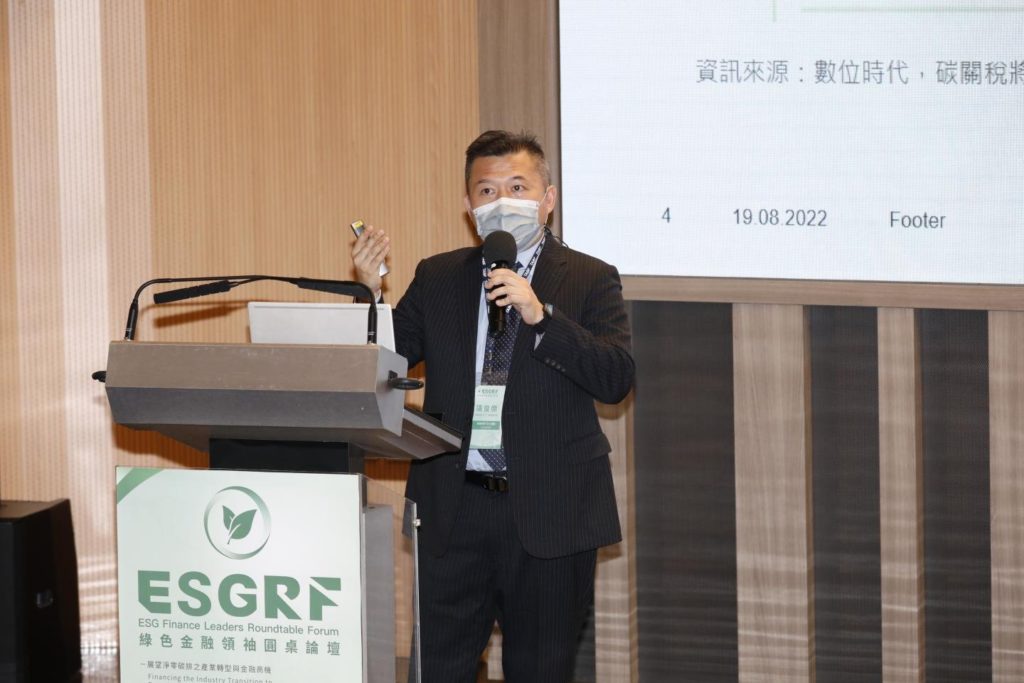
Carbon rights come from different carbon pricing mechanisms (emissions credits in the mandatory market, caps versus reduction credits in the voluntary market and carbon offsets). To date 136 countries, 240 cities and 722 companies have proposed net zero emission targets, and 17 countries have incorporated regulations (including the UK, Japan, South Korea, Southwest New Zealand, etc., Germany, Sweden, Portugal while other countries have set targets to achieve net zero emissions by 2045.
In addition to the CBAM, whereby high-carbon commodities such as iron and aluminium must purchase allowances to enter the EU market, the sale of fuel vehicles will be banned by 2035. In 2025, fuel suppliers of construction and road transportation will be included in the new emissions trading mechanism. The EU will also increase the use of renewable energy, with the proportion of renewable energy reaching 40% by 2030 (the original target was 32%). In addition, the EU will implement energy tax reform, and household heating, shipping, aviation, fishing, and electricity supply will be included in the scope of taxation. The use natural carbon sinks aim to reduce 310 million tonnes of carbon dioxide by 2030 and plant 3 billion trees in Europe by 2030.
They went on to outline Taiwan’s net zero pathway. The Environmental Protection Administration has announced which registered businesses should be checked and GHG inventory guidelines, to help companies implement GHG inventory as well as explanations for the management of the Financial Supervisory Commission and SMEs. Rules will apply to companies that emit more than 25,000 metric tonnes of carbon from 1 January 2023. They went to outline the process and application of carbon footprint verification.
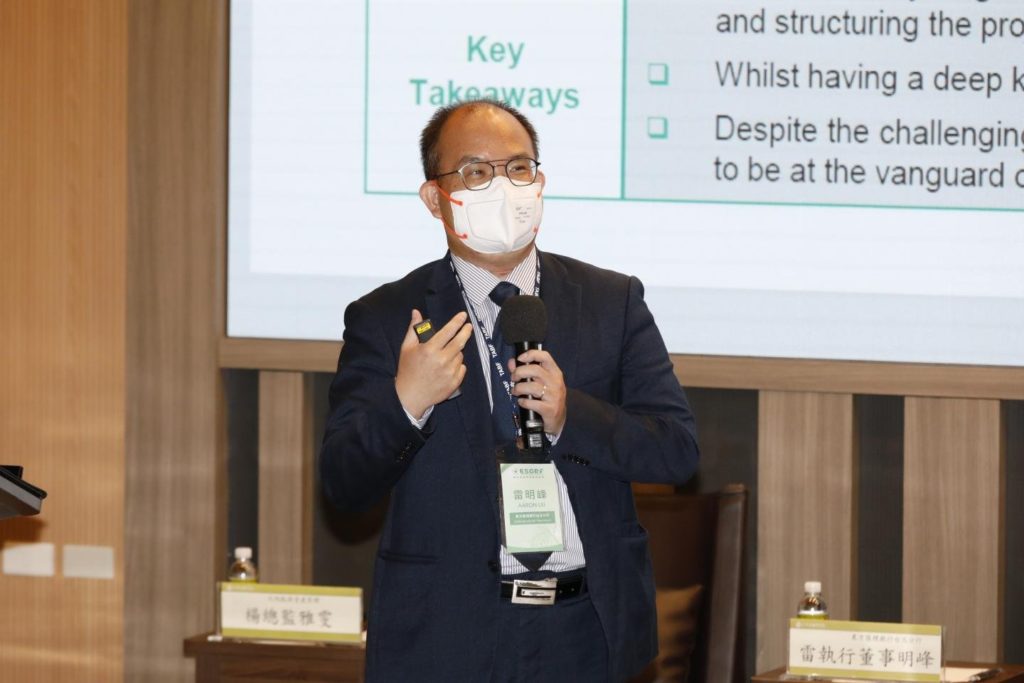
In his presentation, Aaron Lei, Executive Director of Crédit Agricole CIB (法商東方匯理銀行台北分行執行董事 雷明峰) spoke on the topic “Financing the energy transition for industry: Financing opportunities and trends”. He began by talking about the ECB-designed stress test for banks on climate risks that was performed in the first half of 2022. Aggregated results were published in July 2022. Aimed at identifying vulnerabilities, it was mandatory for European-supervised banks.
104 banks were assessed as to how much they rely on carbon intensive industries while 41 banks were assessed to determine how extreme weather events would affect them over the next year. It was found that around 65% of banks’ income of non-financial corporate customers comes from GHG-intensive industries. In addition, banks lack actual data regarding GHG emission availability. Around 70% of the reported emissions rely on proxies, leading to deviations in the reported scope of emissions. According to the ECB, while proxies are a good first step, banks need to engage with their clients to obtain the necessary data.
The speaker went on to talk about the various financing transition tools, including green and social bonds, green social loans, green project finance, sustainability-linked bonds, loans and trade finance. Taiwan’s market is developing rapidly in line with international practice. All issuance of bonds must meet the requirements of limited use of proceed. The issuer should formulate a company-level investment plan and the investment plan should be evaluated by an external independent institution.
He went on to talk about some of the transition technologies to be financed, including hydrogen, waste to biofuels and bioplastics.
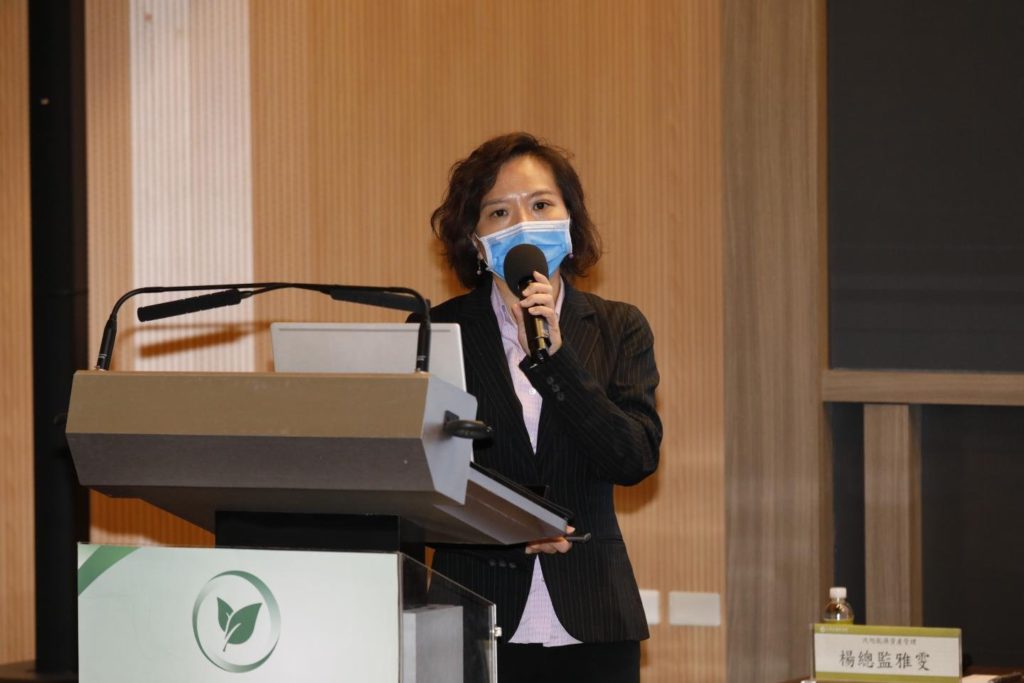
In her presentation, Melody Yang, Head of APAC Portfolio & Asset Management for Ørsted (沃旭能源亞太區資產管理總監 楊雅雯) spoke about Ørsted’s unique project financing model. She began with an introduction to her company, noting that it has a target for 30GW of installed offshore wind capacity and 17.5GW of onshore wind, solar storage and bioenergy. In addition, the company is fully committed to renewable hydrogen and green fuels.
In Taiwan, Ørsted has the largest secured pipeline and is strongly committed to support the buildout targets. Since setting up its Taiwan operation in 2016, it has hired more than 200 employees. The company’s project and transaction structure are based on a successful and tested partnership model developed internally. The structure allows Ørsted to finance its share of the project using its corporate balance sheet and corporate finance while allowing investors to enter into limited recourse project finance. The structure has proven successful over 10 previous transactions. It has adaptations to address Taiwan-specific regulatory, tax, accounting and legal requirements.
Under the structure, Ørsted assumes the risks of cost overruns and delays and provides operations and maintenance services under a 20-year agreement. Power generated is sold to Taiwan Power Company under a 20-year fixed price power purchase agreement. Debt is raised on the basis of cash flows. The structure provides robust security for holding company financing and risk allocation is tailored to maximise value.
The speaker went on to provide a case study where it sold 50% of one of its wind farms to institutional fund managers.
